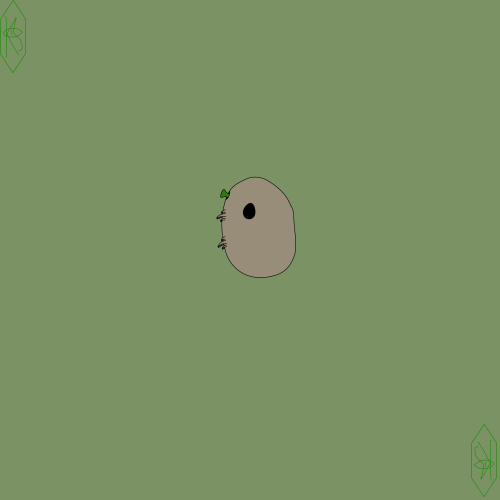Fortipelta, More Commonly Called A Flightless Uking, Are Moderately Sized Hardy Ostoexoapo, These Generalists

fortipelta, more commonly called a flightless uking, are moderately sized hardy ostoexoapo, these generalists riddle the maschoran desert and are found even in adjacent areas, due to their hardiness they have become quite the pest in ◗ta settlements, they use their vestigial wings as a form of threat and sexual display, they are the only known ostoexoapo on maschora to perform ovoviviparity holding their eggs in till they hatch and then birthing a large clutch of hatched fortipelta, they usually “lay” their young inside a plant or corpse so they have a large supply of food and resistance to the oppressive heat and dryness of their environment until they mature, they have become a common food item on many colonies in the ◗ta empire due to their ability to thrive in almost any environment, if you have any questions about this seelenlos please dont be afraid to ask i am more than happy to answer
-
 drawingsphopho liked this · 1 year ago
drawingsphopho liked this · 1 year ago -
 sentientraven liked this · 1 year ago
sentientraven liked this · 1 year ago -
 silly-farmer liked this · 1 year ago
silly-farmer liked this · 1 year ago -
 maxartsblog liked this · 1 year ago
maxartsblog liked this · 1 year ago -
 elritze reblogged this · 1 year ago
elritze reblogged this · 1 year ago -
 elritze liked this · 1 year ago
elritze liked this · 1 year ago
More Posts from Speculative-world






a group of the diurnal skeletons of the maschoran forests

podocanth, more commonly called a skin tick, are small ostoexoapo which use their spiny feet to root themselves onto their hosts and then begin drinking their blood, their shell is rather hollow compared to most ostoexoapo, and they use that extra space for their stomach to expand into as they digest blood, they usually attach themselves to a host while they are still in their larval form, relying on their proboscis to stay attached until they mature, they will fall off their host if they smell a particular chemical that [in the maschoran desert at least] only emits from ambidendroanthid seedheads, which is used to deter seelenlos from eating them, they will make their way onto the seedhead and lay eggs and mate with other podocanths if there are any, their eggs are coated in a sticky mucus like substance that keeps them attached to the seeds allowing them to spread fast and far, if you have any questions about this ostoexoapo please dont be afraid to ask im more than happy to answer



microsomaderes, more commonly called a small fleshhoof, are some of the largest seelenlos in the maschoran forests but also the smallest fleshhooves on ngiu◗, theyre generally solitary but arent particularly territorial, when they mate they usually only lay one or two eggs, and are fiercely protective oviparents, willing to get into fights with packs of lycoperiergo and cheirodromeous, and will even attack much smaller organisms that wouldnt attack them, microsomaderes are obligate folivores and prefer pseudokladi though they will eat most leaves without much issue, however usually microsomaderes kits are usually the ones eating the smaller plants, if you have any questions about this seelenlos please dont be afraid to ask im more than happy to answer

oviodont, more commonly called a colony destroyer, are thin durable ostoexoapo which will invade brachiodontostoma nests once they mate and inject many brachiodontostoma with eggs using their ovipositor, their in the same clade as other flat ostoexoapo however their shell has become compressed to make themselves durable, having thinner parts of their shell in a form of invisible segmentation, this makes them flexibly mobile and well protected, if theyre lucky they will find an exit of the colony once they finish their attack, and continue with their lives, they usually will attempt to find the monarch of the colony to incubate their eggs and will seek out the foodstores and eat what they find and then attempt to leave, their eggs take 4 days after laying to hatch and the young will then begin to eat the colony from the inside out and the entire group of oviodont young will be able to desimate an entire colony in a matter of hours, once they all mature they will leave the abandoned colony and find a mate to continue the cycle, if you have any questions about this seelenlos please dont be afraid to ask i am more than willing to answer
